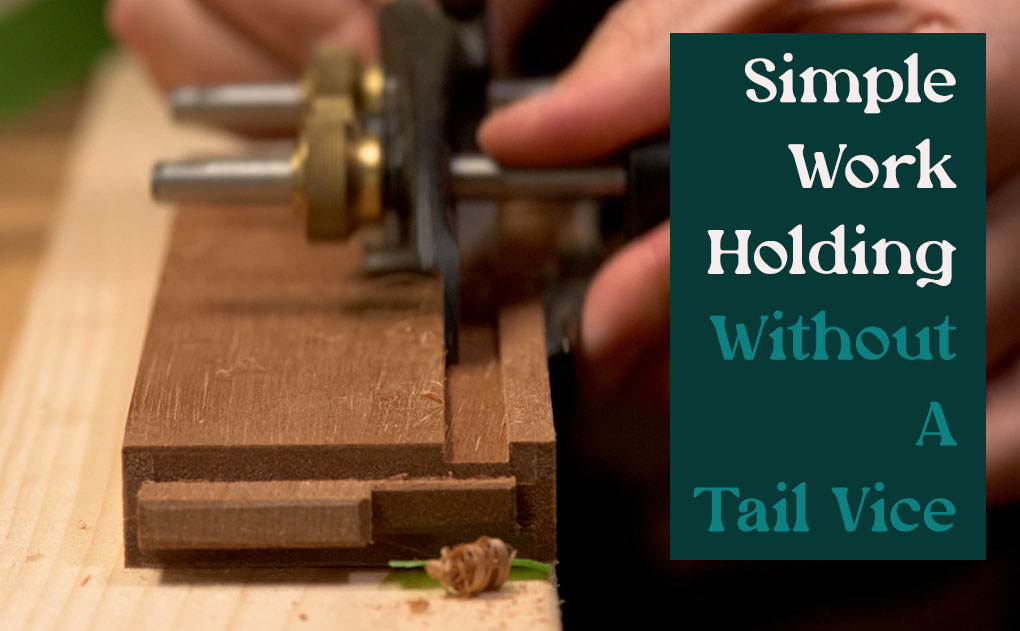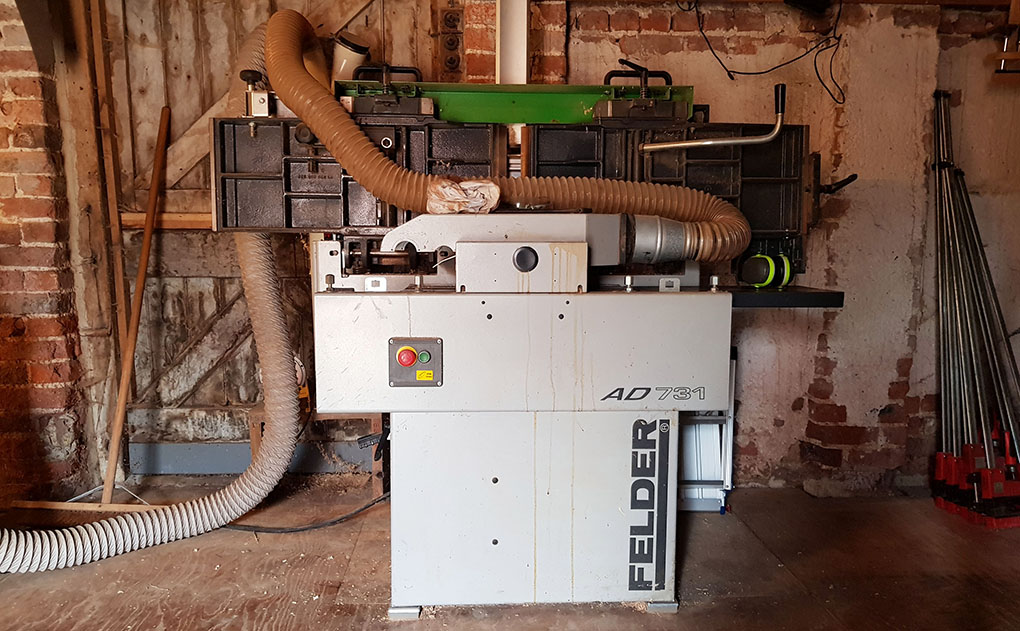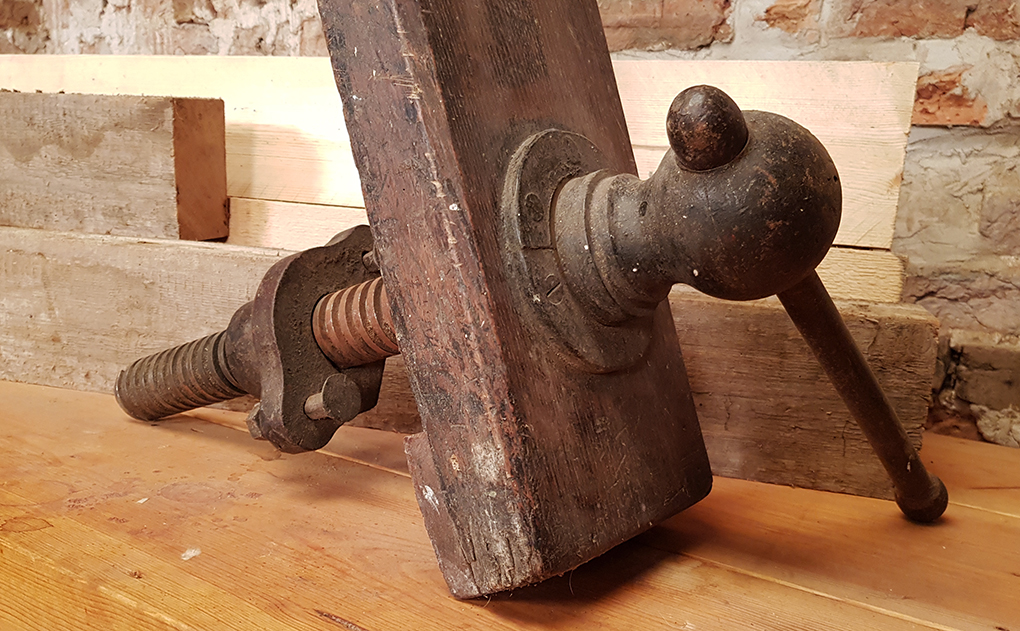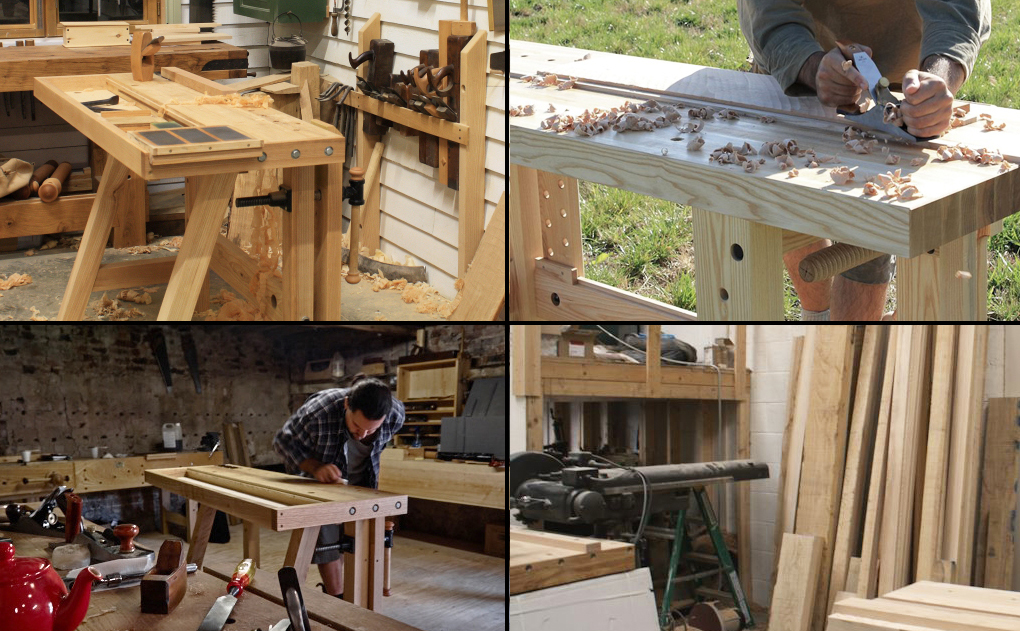Sometimes the biggest challenge of a project can just be getting the wood to stay put while we try to work on it.
I suppose it’s why it’s so easy for us to get lost in the hunt for a perfect workbench design. And drawn in towards all kinds of vice bling and fancy work holding accessories.

But it’s also why I love to keep my workbench incredibly simple.
And why I feel the best work comes when you’re comfortable in bashing your bench about a bit.
The most flexible work holding is when you can just knock a nail or two straight into the bench top, wherever they’re needed to cradle your work.
Then whip them out and have a clean surface for whatever you need next.
I’ve always been a fan of having a good solid face vice.
But tail vices aren’t my thing. Which can leave you scratting your head a bit when you have a very particular need for holding something down on the bench top – such as for ploughing grooves.
I wanted to share a quick tip to show why you really don’t need to over think this.
In our current series, the small rails for the tables need a very accurate groove ploughing into their faces.
It requires holding them down firmly, right at the edge of the bench top so the fence doesn’t snag.
So I just glued them in place.

It might not seem like the most elegant solution, but it does a fantastic job even on delicate parts.
There was no risk of the glue affecting the wood’s surface because I stuck on a piece of masking tape first, then applied the glue to that.
And to keep the top of my workbench clean I clamped down a big length of gash wood. There’s no need for it to be so chunky, but it’s a case of using what you’ve got to hand.
A two part super glue with just a few tiny blobs added makes it really quick to hold the work down, and just as quick to whip it back off.

Whatever your work holding needs, I guarantee there’s a really easy way to go about it, you’ve just got to get into the mind of seeing the simple.
Like all of our series, the Nest of Table build is filled with tips and tricks to help you learn to approach your work by hand in the most efficient and effective way.
This build has a particular focus of helping you to work with a lot of accuracy alongside, but we still find ways to make sure we can keep up the pace – like the simple to knock up hand plane thicknesser jig that we build in chapter two.
The Nest of Tables series is now complete! find full details & watch the intro HERE.




“It requires holding them down firmly, right at the edge of the bench top so the fence doesn’t snag.”
I have done this kind of thing:
just using the “gash wood” (to elevate the piece to be ploughed) and then clamping them together.
Now the pieces you had to plough were shorter and less wide. So you needed the extra steps.
It’s what Ben from Crimson Guitars refers to as “the masking tape trick” and it’s *sooooo* useful.
It’s odd how many of the workholding tips turn out to be glue. I’m still in shock at how good hot glue was for holding stuff on the lathe. I was fully certain this was going to end with me getting brained by a flying lump of wood and yet, it worked perfectly:
http://www.stochasticgeometry.ie/2020/10/19/tortoiseshack/
https://www.youtube.com/watch?v=sSV13mJXqZM
Ha, yea I agree – lathe and hot glue don’t sound like a good match! But clearly they are!
Some of the best solutions really need almost child mind simple applying.
Thanks for the link.
Thank YOU,
Great tips,
I appreciate it.
WIth Gratituce,
It’s the old double sided sticky tape approach, but with glue. Works a treat. I’m always concerned about waste when I use tape and then throw it away straight after, it just feels wrong (which is a little silly given the amount of waste I do generate on a weekly basis). I’m guessing nails or screws in that 2×4 would have worked quite well too, whilst saving the bench top. I’d like to create myself a small parts vice with some threaded rod I have. I reckon it’d be quite handy. Something long and simple that can be clamped to the bench when needed.
Richard, I am about to build your English workbench, but will be installing a vintage Record vice (52 1/2 E). I another post, you recommended, among other things, that timber strips be installed between the top and the vice runners to prevent the vice from dropping when opened up, and this makes a huge difference in use. I can’t visualize what this means. Can you elaborate please?